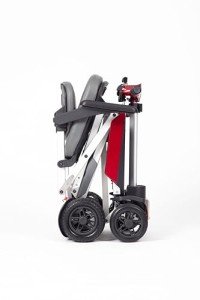Understanding Mobility Devices: Enhancing Independence and Quality of Life
In today's busy world, the desire for mobility is universal. However, particular medical conditions or age-related difficulties can hinder motion, leading to an ongoing search for help. Mobility devices serve as necessary tools to boost independence, improve lifestyle, and make it possible for individuals to engage completely in their communities. This post offers a thorough summary of mobility devices, including their types, functions, choice criteria, and more.
Types of Mobility Devices
Mobility devices range from simple aids to complex equipment, customized to meet numerous requirements. Below is a table summing up common kinds of mobility devices:
| Type of Device | Description | Perfect For |
|---|---|---|
| Walkers | Four-legged assistance devices that provide exceptional stability while strolling. | Individuals requiring extra assistance. |
| Walking canes | Single or three-legged sticks that improve balance and support walking. | Those with small mobility problems. |
| Wheelchairs | Seats installed on wheels, available in handbook and electric variations. | Individuals with minimal or no mobility. |
| Scooters | Electric lorries designed for outdoor use and ease of navigation. | Those who can't stroll long distances. |
| Crutches | Devices that assist people move weight away from a hurt leg. | People recuperating from leg injuries. |
| Rollators | Walkers with wheels, seats, and brakes for enhanced mobility. | Users needing rest options while strolling. |
| Lift Chairs | Reclining chairs that help users in standing up and taking a seat. | Seniors or those with mobility restraints. |
| Mobility Scooters | Small electric lorries for restricted mobility, typically used outdoors. | Individuals needing help over fars away. |
Key Features of Mobility Devices
When selecting a mobility gadget, numerous key functions ought to be thought about to make sure optimal functionality and ease of usage:
- Weight Capacity: Understanding the gadget's weight constraint is crucial for safety and effectiveness.
- Adjustability: Devices needs to be adjustable in height and width to fit the user conveniently.
- Mobility: Lightweight and foldable choices are important for users who travel or require transportation.
- Stability and Safety: Look for functions like anti-tip wheels and tough structures to improve security.
- Reduce of Use: Simple systems and easy to use styles can make a considerable difference in daily use.
- Comfort: Ergonomic designs and cushioned seats can improve the user experience.
Picking the Right Mobility Device
Picking the ideal mobility gadget can be an overwhelming task. Here are some actions to direct the decision-making procedure:
- Assess Needs: Evaluate the individual's mobility challenges and day-to-day activities.
- Speak with a Professional: Engage health care experts who can offer suggestions based on the individual's physical condition.
- Trial Options: If possible, trial various devices to figure out convenience and functionality.
- Review Budget: Consider the expense of the device, including any extra functions or modifications needed.
- Research study Options: Determine the best brand names and models by checking out reviews and contrasts.
Table: Comparative Analysis of Popular Mobility Devices
| Device | Benefits | Downsides |
|---|---|---|
| Walkers | Excellent stability, promotes strolling. | Bulky, might limit motion in small areas. |
| Canes | Lightweight, boosts balance. | May not offer enough assistance for serious mobility problems. |
| Wheelchairs | Ideal for those with considerable mobility constraints. | Can be troublesome, specifically in indoor environments. |
| Scooters | Great for outdoor usage, easy to maneuver. | Limited indoor use, much heavier. |
| Rollators | Provides rest choice, simple to move. | May require more space than traditional walkers. |
| Lift Chairs | Comfy, helps transition from sitting to standing. | More pricey, larger footprint. |
Often Asked Questions (FAQs)
1. What is a mobility device?
A mobility device is any tool designed to assist individuals in moving and navigating their environment. This includes walkers, wheelchairs, scooters, and crutches.
2. How do I know which mobility device is best for me?
Consider your specific mobility difficulties, physical capabilities, and lifestyle needs. Consulting with healthcare professionals can also supply tailored suggestions.
3. disabled scooters covered by insurance?
Many insurance strategies, consisting of Medicare, might cover specific mobility devices. It's important to check with your insurance service provider for particular protection details.
4. Can I lease a mobility gadget rather of purchasing one?
Yes, numerous medical supply stores and pharmacies use leasings for mobility devices. This option is beneficial for people with short-term mobility concerns.
5. How can I keep my mobility gadget?
Routine maintenance is vital. It consists of cleaning up the gadget, looking for wear and tear, and guaranteeing all parts are functioning correctly.
The Impact of Mobility Devices on Quality of Life
Mobility devices significantly enhance the lifestyle for individuals with limited mobility. They foster independence, encourage social interaction, and improve access to vital services and recreational activities.
- Increased Independence: Users can navigate their communities, go to events, and participate in hobbies without depending on others.
- Social Engagement: Mobility devices facilitate involvement in celebrations, thus combating feelings of seclusion.
- Enhanced Safety: Devices supply stability and reduce the risk of falls, promoting user self-confidence.
Mobility devices are more than simply tools for movement; they are entrances to independence and quality living. By comprehending the different kinds of mobility aids offered, their key functions, and considerations for selecting the best gadget, individuals can make educated choices about their mobility needs. Eventually, the best mobility gadget can result in a more active, satisfying life. Whether it's a walker, wheelchair, or scooter, the best option contributes considerably to boosting the mobility and independence of users.

